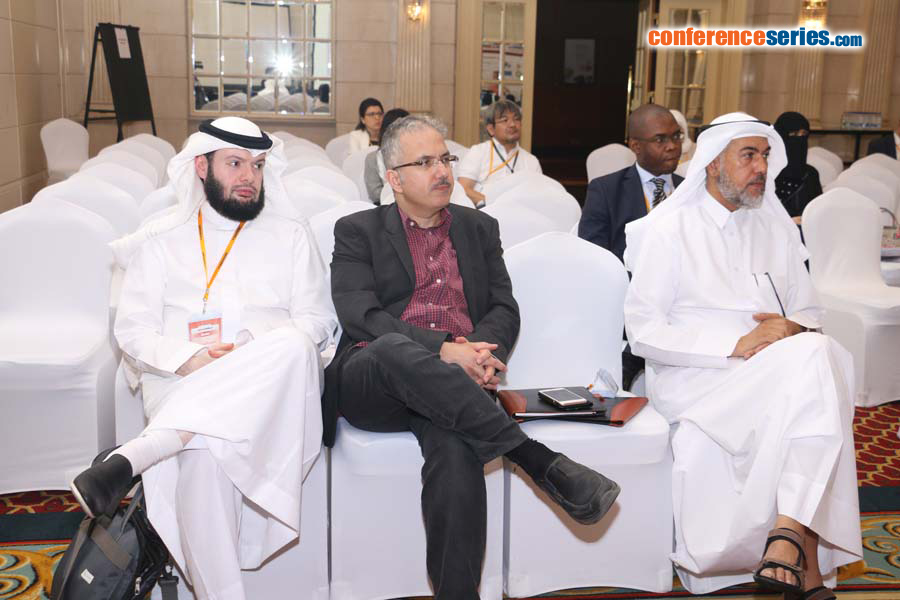
Talal Althomali
Taif University
KSA
Title: Reproducibility of flap thickness in sub-Bowman keratomileusis using a mechanical micro-keratome
Biography
Biography: Talal Althomali
Abstract
At present, laser in situ keratomileusis (LASIK) is the most commonly performed refractive surgery worldwide. Creation of a hinged flap of a desirable size, thickness and smoothness using a micro-keratome or femto-second laser is a crucial step in LASIK that can affect not only the predictability but also the safety of the procedure. However, flap dimensions can vary considerably, not only between the various micro-keratomes but also with the same micro-keratome as a result of differing patient characteristics. It is, therefore, important to study the consistency and predictability of corneal flap thickness with the available micro-keratomes. Flap thickness, along with ablation depth and preoperative corneal thickness, determines the thickness of the residual stromal bed (RSB), which has been implicated in the development of iatrogenic keratectasia after LASIK. For example, a corneal flap that is thicker than intended may result in reduced RSB thickness, weakening the biomechanical strength of the cornea. In addition, flap thickness has been linked to a variety of postoperative complications, such as epithelial in growth, flap dislocation, striae, irregular astigmatism and corneal opacities, potentially reducing the success rate of LASIK. It is therefore important to accurately predict the achievable flap thickness for a given intended flap thickness. Several studies have assessed the correlations between preoperative variables and corneal flap thickness in LASIK; subsequently, micro-keratome design and technique modifications have helped minimize the variability in the flap and therefore the incidence of flap complications. In recent years, there has been a growing trend toward the use of sub-Bowman keratomileusis (SBK); that is, thin-flap LASIK with an intended flap thickness of less than 100 µm. Sub-Bowman keratomileusis is a hybrid approach that combines the advantages of surface ablation with those of lamellar approaches. Compared with a conventional (thicker) flap, an intended regular thin flap of less than 100 µm leaves a thicker RSB, thereby preserving biomechanical strength and potentially decreasing the risk for corneal ectasia. In addition, refractive and visual outcomes of SBK have been found to be comparable to or better than those of standard LASIK in terms of faster visual recovery, better predictability, better contrast sensitivity, and a lower rate of enhancements. Even though some studies have documented the refractive and visual outcomes of femto-second laser–assisted and micro-keratome-assisted SBK (thin-flap LASIK with intended flap thickness ≤110 µm), to our knowledge there is a paucity of literature on the safety and predictability of SBK micro-keratomes. Furthermore, despite the emergence of femtosecond laser–assisted flap creation, mechanical micro-keratomes remain the preferred choice or the only available option in the majority of developing countries. Therefore, the current study was designed to examine the predictability of flap thickness using an SBK mechanical micro-keratome and to identify factors that may be related to variations in flap thickness in SBK procedures. Patients with a stable refraction for 1 year, corrected distance visual acuity (CDVA) of at least 20/20 in each eye and minimum central corneal thickness of 480 µm in each eye had microkeratome-assisted SBK. Parameters included manifest refraction, uncorrected distance visual acuity (UDVA), CDVA, pachymetry and higher-order aberrations (HOAs). The micro-keratome was reliable with reasonable predictability for SBK flap creation. Extra caution in handling the flaps to avoid flap striae or tears is advised. Flap thickness correlated positively with preoperative pachymetry; however, the variation in flap thickness did not affect visual outcomes.




